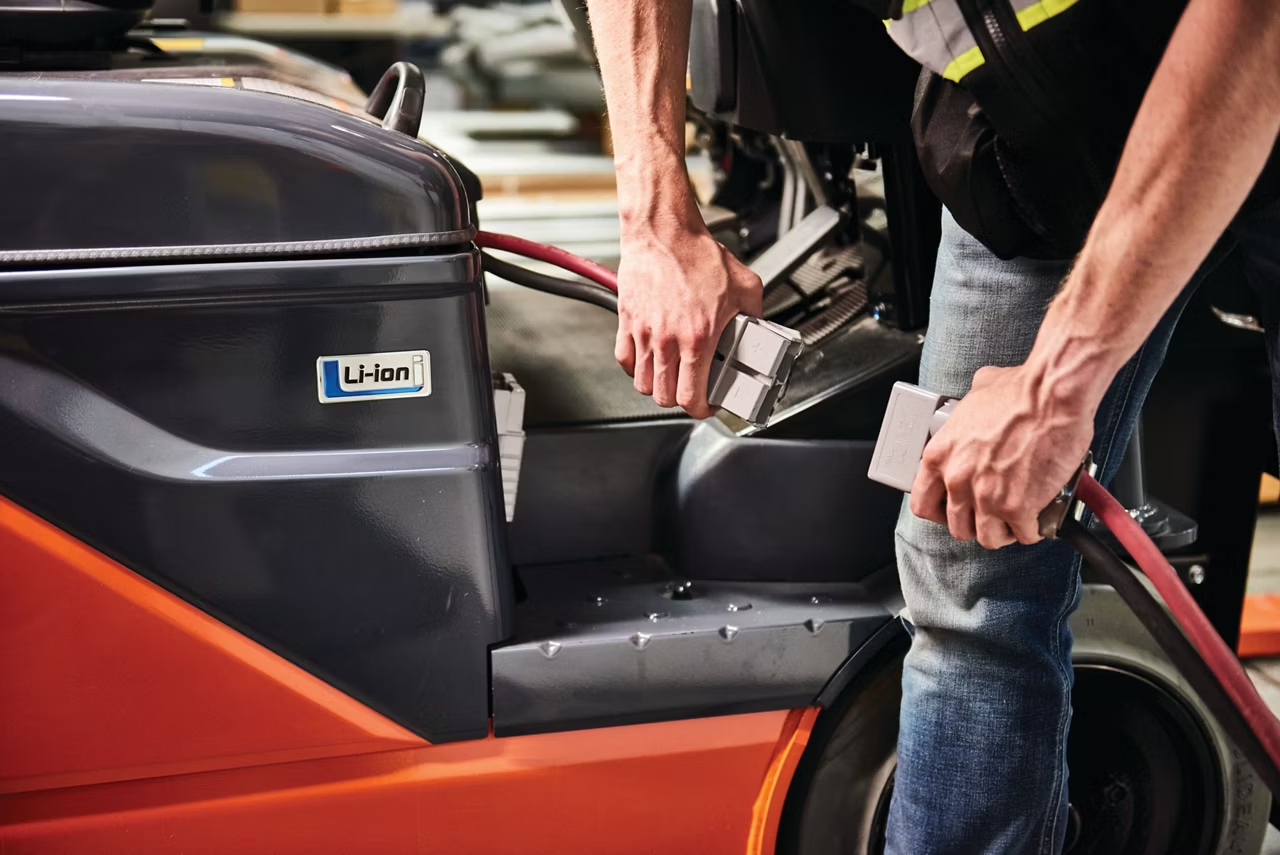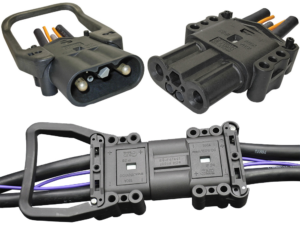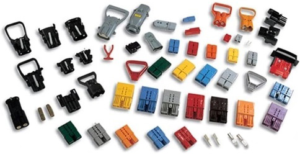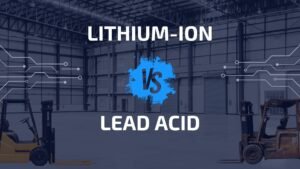Forklift Battery Charger Types and Selection Guide
Forklift operations rely heavily on efficient battery charging. The primary charger categories are Conventional, Opportunity, and Fast Chargers. Each serves distinct operational needs:
- Conventional: Delivers full-capacity charging during extended breaks (e.g., overnight).
- Opportunity: Provides partial top-ups during short operational pauses (e.g., shift changes, breaks).
- Fast Chargers: Minimizes downtime through accelerated charging cycles.
Optimal selection hinges on workflow patterns, battery chemistry (lead-acid vs. lithium-ion), and overall efficiency goals.
- Fast Chargers: Minimizes downtime through accelerated charging cycles.
In-Depth Analysis: Charger Functionality & Impact
- Conventional Charger Operation:
- Utilizes a constant current method, typically requiring 8-12 hours for lead-acid batteries.
- Employs a bulk-absorption-float charging profile to mitigate risks like overheating and sulfation.
- Best suited for single-shift operations prioritizing maximum battery lifespan, accepting necessary downtime.
- Enhanced safety features in modern units include temperature compensation sensors and automatic shutoff mechanisms.
- Conventional Charger Operation:
- Advantages of Opportunity Chargers:
- Enables partial recharging (15-30 minute sessions) during natural workflow interruptions.
- Extends usable battery runtime significantly in multi-shift environments, delaying the need for full recharges.
- Offers potential energy cost savings by facilitating charging during off-peak rate periods.
- Utilizes controlled charging curves (often lower voltage) to minimize battery stress.
- Increasingly compatible with lithium-ion technology, enhancing versatility.
- Advanced Tech: Modern units feature adaptive algorithms for real-time battery condition analysis and integration with warehouse management systems for optimized scheduling. Facilities report substantial daily energy consumption reductions compared to conventional methods.
- Advantages of Opportunity Chargers:
- Fast Chargers & Battery Longevity:
- Employs high-current pulses to achieve significant charge in 2-4 hours.
- Can increase thermal stress, particularly on lead-acid batteries.
- When paired with lithium-ion batteries and adequate cooling systems, can sustain high capacity (e.g., 80%+) beyond 1,500 cycles.
- Critical maintenance for lead-acid includes frequent electrolyte checks and reliance on adaptive charging software to prevent premature degradation.
- Fast Chargers & Battery Longevity:
- Charger Voltage & Battery Performance:
- Precise voltage matching is non-negotiable (e.g., 48V charger for 48V battery system).
- Under-voltage results in incomplete charging; over-voltage accelerates damaging plate corrosion.
- Intelligent chargers automatically detect and adjust output voltage to match requirements.
- While lithium-ion tolerates slight voltage variance (±5%), precise cell balancing is essential to prevent stratification.
- Charger Voltage & Battery Performance:
| Battery System Voltage | Charger Voltage Range | Acceptable Tolerance |
|---|---|---|
| 24V | 24V – 28V | ±2V |
| 48V | 48V – 56V | ±4V |
| 80V | 80V – 90V | ±5V |
- Tech Note: Advanced chargers compensate for voltage drops over long cable runs in large facilities, ensuring precise delivery. Maintaining tight cell voltage differentials (e.g., within 0.05V) is critical for battery array health and performance.
- Essential Safety Features in Modern Chargers:
- Ground-fault circuit interruption (GFCI).
- Spark-proof connector designs.
- Thermal runaway detection and shutdown systems.
- IP54-rated (or higher) enclosures for dust/water resistance.
- Lithium-specific features: Cell-level voltage monitoring and CAN bus communication for instant disconnect during faults.
- Compliance with standards like UL 1564 (North America) is mandatory for industrial safety.
- Essential Safety Features in Modern Chargers:
- Wireless Charging Viability for Heavy-Duty Use:
- Inductive wireless systems demonstrate 90-93% efficiency in trials, using precisely aligned coils.
- Eliminate physical connector wear but necessitate reliable alignment technology.
- Current capabilities support mid-sized forklifts (up to ~80V/300A).
- Higher deployment costs (approx. +40% vs. wired) currently limit widespread heavy-use adoption.
- Wireless Charging Viability for Heavy-Duty Use:
- Operational Cost Impact of Solar-Powered Chargers:
- Can reduce grid electricity reliance by 30-60% in regions with high solar insolation.
- Hybrid systems combine PV panels with fast-charging battery buffers (e.g., lithium-titanate) for continuous operation.
- Return on Investment (ROI) typically achieved within 3-5 years, especially with available tax incentives.
- Key challenges: Significant space requirements (~10 sq ft per kW) and managing voltage stability during low-light conditions.
- Operational Cost Impact of Solar-Powered Chargers:
“The rise of modular chargers with interchangeable power units is transforming warehouse energy strategies. Operators gain scalable charging capacity and achieve near-peak efficiency (up to 98%) via silicon carbide inverters. Next-generation systems will dynamically integrate with building energy management to optimize charging loads during grid demand events.” — Senior Industrial Power Systems Engineer
Industry News & Developments (2025)
- Sodium-Ion Fast-Charging Deployments: Leading manufacturers are introducing integrated sodium-ion battery and charger ecosystems, offering ~40% faster charging times alongside improved thermal safety.
- AI-Optimized Charging: Machine learning algorithms now dynamically tailor charge cycles based on real-time battery health and usage data, extending lifespan projections by up to 30%.
- Cross-Compatibility via Modularity: New charger platforms feature swappable voltage/current modules, enabling a single unit to service diverse forklift brands – a significant cost saver for multi-brand logistics centers.
Forklift Battery Charger FAQs
- Optimal Charging Frequency?
- Lead-Acid: Perform deep discharges followed by full recharges.
- Lithium-Ion: Prefer partial recharges, maintaining state of charge between 20-80%.
- Always refer to the specific battery manufacturer’s guidelines.
- Optimal Charging Frequency?
- Can Automotive Chargers Be Used?
- No. They lack the precise regulation, cooling, and safety features required for industrial forklift batteries. Use risks damage and voids warranties.
- Can Automotive Chargers Be Used?
- Essential Charger Maintenance?
- Monthly: Clean terminals.
- Weekly (Flooded Lead-Acid): Check electrolyte levels.
- Regularly: Inspect cables; ensure ventilation.
- Periodically: Recalibrate voltage (e.g., every 500 cycles); update firmware (Li-ion systems).
- Essential Charger Maintenance?
- Key Industrial Charger Types?
- Conventional (Ferroresonant): Transformer-based, robust, steady charge.
- High-Frequency: Semiconductor-based, efficient, compact, dominant in modern setups.
- Opportunity: For partial top-ups during shifts.
- Smart Chargers: Feature microprocessor control for adaptive charging. Selection depends on battery size, duty cycles, and operational intensity.
- Key Industrial Charger Types?
- High-Frequency Charger Advantages?
- Utilize advanced power electronics for superior efficiency (10-20% less waste).
- Lighter, cooler operation, faster charging potential.
- Extend battery life via precision charging curves.
- Ideal for multi-shift use; compact design saves space.
- High-Frequency Charger Advantages?
- Opportunity vs. Conventional Charging?
- Conventional: Full recharge during long breaks. Best for single shifts, maximizes battery longevity.
- Opportunity: Partial top-ups during short pauses. Enables near-24/7 operation but requires robust batteries; risks heat buildup if mismanaged.
- Opportunity vs. Conventional Charging?
- Smart Charger Technology?
- Microprocessors and sensors auto-adjust voltage/current based on battery temperature, charge level, and condition.
- Prevent overcharge/undercharge, enable safe partial charging.
- Can integrate with fleet software for predictive maintenance.
- Reduce energy costs by 15-30% compared to older conventional models. Essential for lithium-ion.
- Smart Charger Technology?
- Selecting a Warehouse Charger?
- Match voltage & amp-hour rating to battery specs.
- Prioritize High-Frequency or Smart chargers for multi-shift efficiency.
- Confirm battery chemistry compatibility (Lead-acid, AGM, Lithium-ion).
- Analyze required charging time vs. operational hours.
- Ensure certifications (UL, CE).
- Evaluate space, cooling, and connectivity (Wi-Fi/Data for smart features).
- Consider opportunity charging if continuous operation is needed.
- Factor in long-term energy savings, not just purchase price.
- Selecting a Warehouse Charger?




